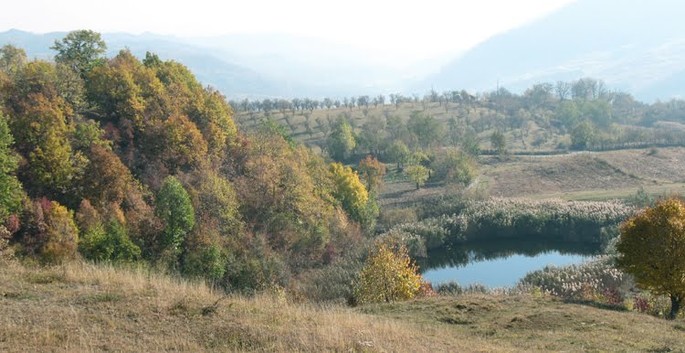The Buzău area is well-known for the beauty of its landscapes and landforms, but also for many legends related to these lands, enriching it with a touch of mystery. 50 kilometres from the city of Buzau, within the commune of Mânzăleşti, at an altitude of 600 meters, is the Meledic Plateau organized as a Natural Park. All the way up is accompanied by enchanting views, white slopes (due to salt deposits), green valleys, high peaks and mountain villages with small scattered huts.
Meledic village is a hamlet inhabited by only a few families, full of charm and surrounded by the natural beauty of these generous lands. There are several caves dug in salt around the plateau. The "6S Meledic" Cave is among them, a cave unique in Europe by the way of formation and due to its impressive size.
With a length of 1220 meters and rooms up to 200 meters high, Meledic Cave entered in the Book of Records in 1980, being replaced in 1983 by Malham Cave (Israel), located near the Dead Sea, which has a total length of 3100 meters. Stalagmites are small, but stalactites are up to 1.5 meters long. The caves dug in salt in this area have various shapes, their colour that combines several shades: from immaculate white to yellow, pink and even red, up to brown and gray.
Right in the middle of the plateau is a karst lake, Meledic Lake, also known as the "Bottomless Lake", so named because of its depth - which is theoretically 20 meters - but locals say there are places where you cannot reach the bottom.
This mysterious lake is unique, is a glow of fresh water on a mass of salt. In time the lake generated several legends. It is said that in the late 1800s, a carriage full of mineral water barrels has fallen into the lake. But, in fact, the barrels hid real treasures and not mineral water. There are six other freshwater lakes on the plateau, but smaller in size.
Once in the area, in addition to all these wonderful things, you can admire the Sphinx that guards like a soldier at the foot of the Breazan Massif, or the Găvan Monastery, founded in 1707.
























